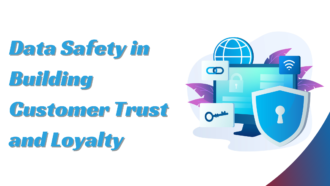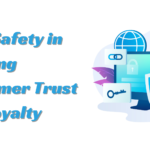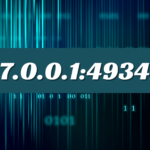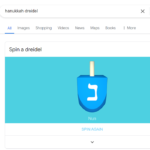What are the 8 Pillars of Total Productive Maintenance (TPM)?
- 1 What is TPM, and What are the eight pillars of Total Productive Maintenance (TPM)
- 2 Here Are The 8 Pillars of Total Productive Maintenance –
- 2.1 #1: Autonomous Maintenance
- 2.2 #2: Focused Improvement
- 2.3 #3: Planned Maintenance
- 2.4 #4: Quality Maintenance
- 2.5 #5: Early Equipment Management
- 2.6 #6: Training and Education
- 2.7 #7: Health, Safety, and Environment
- 2.8 #8: TPM in Administration
- 3 Concluding Remark
Research reveals that the average hourly loss for downtime is $260,000. The figures are astonishing as most of the work has already been automated with minimal human intervention. However, the statistics (loss per hour) have swelled in recent years and hence could not be ignored at all costs. This is where the eight pillars of Total Productive Maintenance (TPM) come into play.
What is TPM, and What are the eight pillars of Total Productive Maintenance (TPM)
Total Productive Maintenance (TPM) is a maintenance philosophy in which the critical elements in the manufacturing industry are aligned to achieve robust, continuous output. As the TPM consultant suggested, the principle stands for perfect production and has been divided into eight guiding pillars. The eight pillars of TPM focus on preventive and proactive measures that help improve equipment reliability.
Here Are The 8 Pillars of Total Productive Maintenance –
#1: Autonomous Maintenance
Autonomous maintenance refers to the operators taking ownership of their machines. The workers should also be trained on routine maintenance like lubricating, inspecting, and cleaning. This gives the machine operator a sense of ownership and in-depth knowledge about the machine. On the other hand, it also guarantees that the machine remains clean all the time and is in safe hands.
However, the TPM consultant suggests implementing standards. This involves training the operators to care for machines according to the manual. Once trained, the operator could autonomously schedule frequent checkups.
#2: Focused Improvement
The word focused improvement originates from the Japanese term “Kaizen.” To achieve operational efficiency, the company must continually grow and experiment in manufacturing. This is where the concept of Kaizen comes into play. The key lies in working with a small group from a diverse background who focuses on improving the processes. Diverse manufacturing teams ensure all the critical parts of the process are taken care of; hence, brainstorming becomes a vital tool of the methodology.
#3: Planned Maintenance
Next on the list is planned maintenance. This process involves studying the history of downtimes and failures and thus helping to predict them. Scheduled maintenance ensures that the machines are cared for, decreasing downtime. On the other hand, it lets users know when maintenance is about to start and thus keeps the product up before time.
This ensures that production is not delayed. Furthermore, proactive maintenance could ideally be scheduled when most machines are idle or in minimal use.
#4: Quality Maintenance
Despite the scheduled planning and regular checkups, the work is futile until quality maintenance is provided. This ensures that all the components produce accurate results no matter what. On the other hand, the most significant advantage of quality maintenance is that it eliminates low-quality output and helps detect errors. Also, this ensures errors are minimized and eliminated in the process.
#5: Early Equipment Management
The following TPM methodology is pivotal and the most crucial method of the eight pillars of Total Productive Maintenance (TPM). In this step, the machine obtained for the manufacturing process using TPM is carefully studied, and changes are made in its design according to the needs. Understanding the needs of people who interact with machines regularly definitely helps.
This could thus help make working and maintaining the machine easier. Significant additions include better part accessibility, operator comfort, and increased manual efficiency.
#6: Training and Education
Without the proper guidance, it becomes critically impossible for everyone in the hierarchy to operate. Continuous improvement consulting training on all levels ensures that all the latest practices are updated in the company. On the other hand, if you do not follow the latest updates, it becomes sure that your program will fail. Such a program aims to identify tasks to identify gaps and fulfil them. The following principle helps in the long run and can prove to be a disaster for the company in the long run.
#7: Health, Safety, and Environment
Apart from the obvious reasons, a safe environment is essential. Employees dedicate their lives to seamlessly building and running a company. Hence, it becomes necessary for companies to provide an environment that keeps them afresh while taking care of their health and safety needs. Stringent laws imposed by governments also focus on the safety of the employees. Companies need to invest in creating a positive environment that fulfils all the criteria of the governing body.
#8: TPM in Administration
Last but not least from the eight pillars of Total Productive Maintenance (TPM). The role of the Total Project Management process is to eliminate all the undesired functions or methods. This does not limit the mean optimization of processes only. Undesired or unnecessary administrative functions also need adaptions in the current time and hence could not be ignored at all costs. This means there is room for growth in administrative tasks like order processing, scheduling, and procurement of goods. To add more to it, TPM aims to streamline processes and make the entire process waste-free.
For instance, ordering through a streamlined order processing procedure can provide the raw materials at the right time and get them manufactured and delivered without hassle.
Concluding Remark
The concept of TPM dates back decades and, hence, cannot be ignored. The procedure takes care of the needs at all levels and, hence, cannot be ignored at all costs.

















